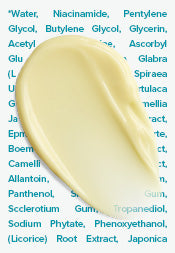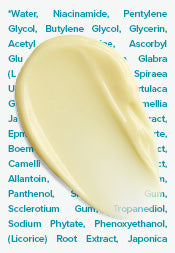How to Give Yourself a Manicure at Home in 10 Steps
There is something about a beautiful manicure that just looks and feels elegant, but the cost of salon manicures can really add up over the course of a year. If you want to save time and money on manicures, you’ll need our essential steps for a DIY gel manicure at home—for a fraction of the cost. We recommend reserving 1-2 hours so you can relax during this self-care ritual without feeling rushed.
The Perfect Manicure at Home
Step 1: Gather essential tools. Be sure to have the following in a tote you always have assembled and ready.
- Nail-polish remover and cotton swabs or pads
- Nail clippers
- Emery board and nail buffer
- Cuticle pusher and nippers
- Callous/cuticle remover
- Hand/nail moisturizer
- Base coat
- Nail polish
- Clear topcoat
Step 2: Remove any previously applied nail polish. To acetone or not to acetone, that is the question.
When you are at a store and wondering which type of polish remover to buy, keep this in mind: Non-acetone nail polish removers are gentler than acetone-based ones BUT the acetone-based remover will work far faster and be in contact with the skin for a shorter period of time than the non-acetone based removers. It’s a trade-off because even the gentler non-acetone based polish removers are still not kind to skin.
Step 3: Shape nails.
Clip your nails, if necessary, then gently file them into shape. A slightly rounded nail shape or square-rounded edge is generally the best way to go but you can be as creative as you want.
Avoid metal or extremely coarse nail files to minimise splintering. Instead, choose a gently abrasive emery board or crystal nail file. Smooth the tops and sides of the nails with a slightly abrasive buffer to ensure an even surface, but don't forget, if you buff the nails too smooth, the polish won't adhere as well and can literally slip right off.
Step 4: Soak away.
Ahh … the relaxing part. Place your hands in a bowl of warm (not too hot) water and add a bit of your gentle face cleanser or shampoo to the water. Soaking the cuticle before trimming is crucial, but over-soaking actually damages skin and nails, so limit this step to three minutes or less.
Step 5: Apply callous/cuticle remover.
When cutting away the thickened skin around the nail, applying a bit of cuticle remover will be a big help! Note to not let it sit on the cuticle area for more than a few seconds.
Step 6: Remove excess cuticles and calluses around the nail.
Using the cuticle pusher from your kit, gently push the cuticle back away from the nail, but don't push it too far because it can damage nail growth or fray the cuticle.
Be careful NOT to pull, lift, tear, rip, force, or cut into the cuticle in any way. Do NOT clip into the cuticle; merely nip off the free edge with a pair of metal cuticle nippers. It's better to under-do this step than to overdo it because the cuticle helps protect the nail bed from all sorts of problems.
Now’s also the time to remove hangnails around the sides of the nail, but again, be careful not to cut into the nail itself or to cut into the skin too deeply.
Step 7: Moisturise.
Massage a rich body butter, moisturising body balm, or silky, fragrance-free oil into the cuticles and all over the hands to hydrate and replenish skin.
Step 8: Prep for polish.
Moisturising ingredients left on the nail will prevent the polish from adhering properly. Using a cotton swab or pad, apply nail-polish remover over the nail's surface to remove any residue. Although it helps to avoid getting remover on the cuticle because you want to keep that area moisturised, don't worry if you do because you're going to apply moisturizer on your nails again once the polish is dry. The most important part of this step is to be sure the nail has absolutely nothing oily or emollient left on it.
Step 9: Paint nails in layers.
If you have weak or brittle nails, use a base coat of ridge-filling nail polish to shore up the nail. A base coat also protects nails from staining (especially important if you prefer red nail polish) and prevents chipping. Next, apply your colour polish in layers, allowing each layer to dry between coats. Two coats of colour polish followed by a top coat to add gloss should do the trick.
If you're new at painting nails, use a lighter shade of polish; any mistakes will be less noticeable!
Tip: Take a few minutes to touch up your manicure every other day with a single layer of top coat. This can make all the difference in keeping up that "from the salon" appearance and durability.
Check for and clean up any mistakes—and you're almost done! It takes time for nails to fully dry, so be patient. A fan helps, but don’t use heat (like from your blow dryer) or the polish will chip and peel. Also, don’t put your nails too close to the fan’s airflow or you’ll end up with bubbles in your polish.
Step 10: Reapply moisturizer!
Keeping your hands and the nail area healthy-looking requires moisturizer. You can't have great nails and hands without this essential product.
If you have the right tools lined up and you use the right techniques, you can definitely give yourself a beautiful home-based manicure. Of course, there's nothing wrong with getting a professional manicure for special occasions or just to be pampered, but knowing how to do it yourself can save you a lot of time and money!
Shop our popular range of body moisturizers from Paula’s Choice.
Recommended Products
Lip & Body Treatment Balm
Ultra-Rich Soothing Butter
Moisture Renewal Oil Booster












